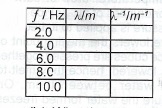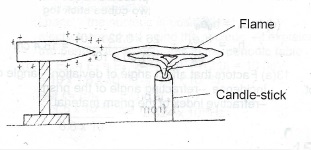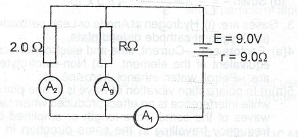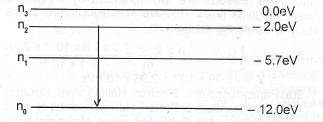(a) Distinguish between perfectly elastic collision and perfectly inelastic collision.
(b) Sketch a distance — time graph for a particle moving in a straight line with:
(i) uniform speed;
(ii) variable speed.
(c) A body starts from rest and travels distances of 120, 300 and 180m in successive equal time intervals of 12 s. During each interval the body is uniformly accelerated. (i) Calculate the velocity of the body at the end of each successive time interval.
(ii) Sketch a velocity-time graph for the motion.
(a) Explain the terms: (i) inertia; (ii) inertial mass.
(b) List three factors which affect the rate of evaporation of water in a pond.
(c) Two ice cubes pressed together for some time were found to stick together when the pressure was removed. Explain this observation.
(d) Two vertical capillary tubes of the same diameter are lowered into beakers situated at the same level, containing liquids A and B of densities 9.2 x 10\(^2\) kgm\(^{-3}\) and 1.30 x 10\(^3\) kgm\(^{-3}\) respectively. A suction pump is used to withdraw air from the top of the liquid columns in the tubes by means of a T-piece arrangement until the liquid in A rises to a height of 26.0 cm. Calculate the height of the liquid in tube B.
(a) State two factors which affect the angle of deviation of a ray of light through a triangular glass prism.
(b) Seven virtual images of an object are formed when two plane mirrors are inclined at an angle 0 to each other. Calculate the value of 0.
(c) By means of a ripple tank, a student was able to generate series of transverse waves by varying the frequency of the dipper and all the waves so generated covered a distance of 0.80 m in 0.2s.
(i) Determine the speed, v, of the waves.

Copy and complete the table given in your answer booklet.
(iii) Plot a graph with f on the vertical axis and \(\lambda ^{-1}\) on the horizontal axis.
(iv) What does the slope of the graph represent?
(a)

When a positively charged conductor is placed near a candle flame, the flame spreads out as shown in the diagram above. Explain this observation.
(b) A proton moving with a speed of 5.0 x 10\(^{5}\) ms\(^{-1}\) enters a magnetic field of flux density 0.2 T at an angle of 30° to the field. Calculate the magnitude of the magnetic fcrce exerted on the proton. [Proton charge = 1.6 x 10\(^{-19}\) C]
(c)

The diagram above illustrates a 9.0 V battery of internal resistance 0.5 \(\Omega\) connected to two resistors of values 2.0 \(\Omega\) and R \(\Omega\). A\(_1\) A\(_2\) and A\(_3\) are ammeters of negligible internal resistances. If Al reads 4.0 A, calculate the:
(i) equivalent resistance of the combined resistors 2.0 \(\Omega\) and R \(\Omega\);
(ii) currents through A\(_1\) and A\(_3\) ; (iii) value of R.
(a) State three conclusions that can be drawn from Rutherford's experiment on the scattering of alpha particles by a thin metal foil in relation to the structure of the atom

The diagram above illustrates th3 energy levels of an electron in an atom. If an excited electron moves from n\(_2\) to n\(_\theta\), calculate the:
(i) frequency;
(ii) wavelength of the emitted radiation. [ h = 6.6 x 10\(^{-34}\) Js; le V = .6 x 10\(^{-19}\) J; C = 3.0 x 10\(^8\) ms\(^{-1}\)]
(c) The following nuclear equations represent two types of radioactivity.
\(^{226}_{88}R_a \to ^{222}_{86}R_n + ^a_2a\) (Equation A)
\(^{14}_7N + ^4_2a \to ^{17}_8O + ^1_1p\) (Equation B)
Identify each type and explain briefly the difference between them